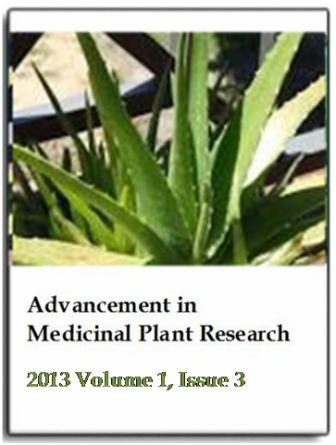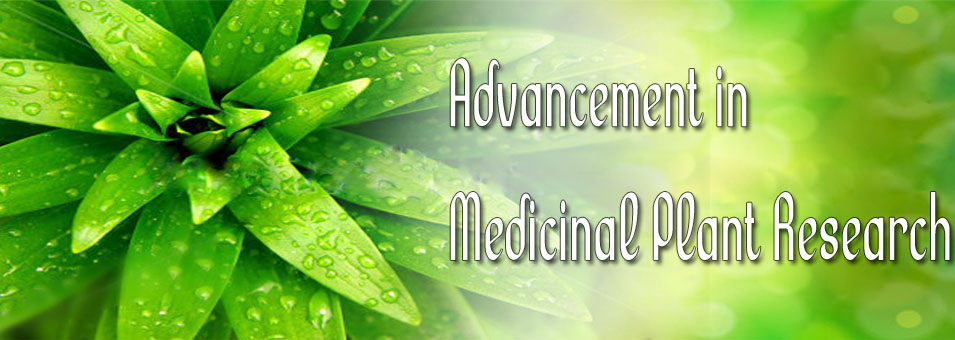Development of wet rot disease of Amaranthus cruentus L. caused by Choanephora cucurbitarum (Berk. and Rav.) Thax. in response to phytochemical treatments and inoculation methods
Awurum A. N. and Uchegbu P. C.Advancement in Medicinal Plant Research
Published: August 15 2013
Volume 1, Issue 3
Pages 66-71
Abstract
The development of the wet rot disease of Amaranthus cruentus L. caused by Choanephora cucurbitarum (Berk. and Rav.) Thax. in response to treatment of the crop with leaf extracts of Dennettia tripetala (Baker f.), Spondias mombin, Bryophyllum pinnatum (Lam.) Oken, and methods of inoculation of the organism, were evaluated in the greenhouse of the Department of Plant Health Management of Michael Okpara University of Agriculture, Umudike. The experiment was a 3 × 5 factorial in a Completely Randomized Design (CRD) replicated five times. The treatment comprised three methods of inoculation: un-inoculated seeds, inoculated seeds and inoculated plants at six weeks after planting and fungicide products. The fungicides were Benomyl (a synthetic fungicide, plant extracts) and untreated control using sterile water. The results indicated that the highest infection rate of the disease was obtained in the first six weeks of inoculation of the organism, with plants in the control pots having the highest disease severity (9.8). Among the plant extracts used, extracts of D. tripetala gave the best control with a severity of 5.8. Plants in pots where the seeds where inoculated with C. cucurbitarum and those in pots of un-inoculated seeds had less damage, performed better and produced higher dry matter yield than plants in pots where the seedlings were inoculated with the pathogen. There was a significant (P < 0.05) difference in the growth and yield of plants treated with Benomyl and plant extracts, compared with those of the control.
Keywords: Phytochemicals, Amaranthus cruentus, Choanephora cucurbitarum, severity score, incidence, disease.
Full Text PDF
